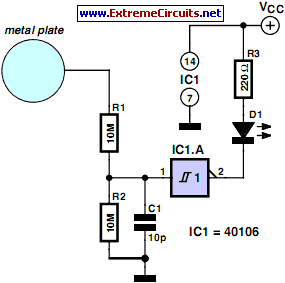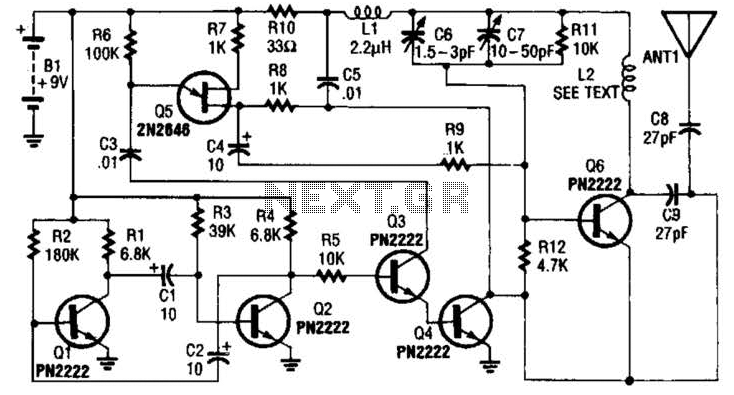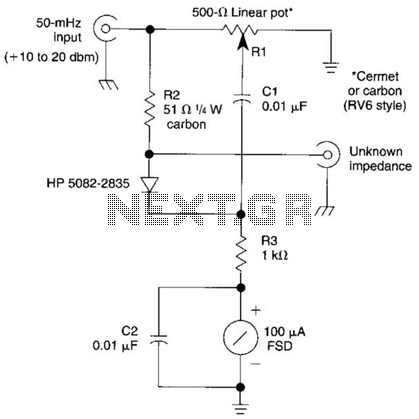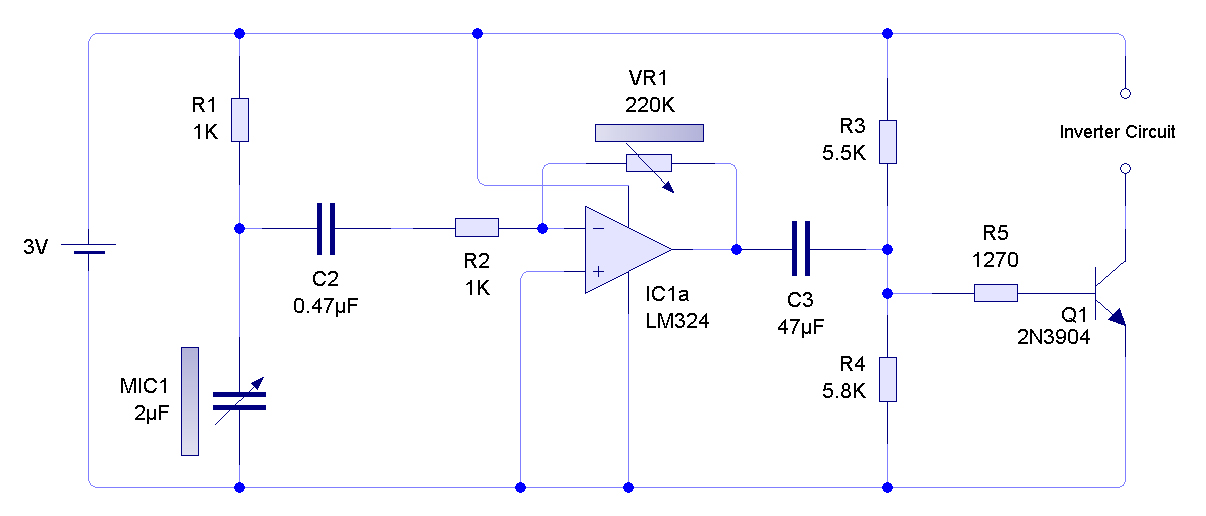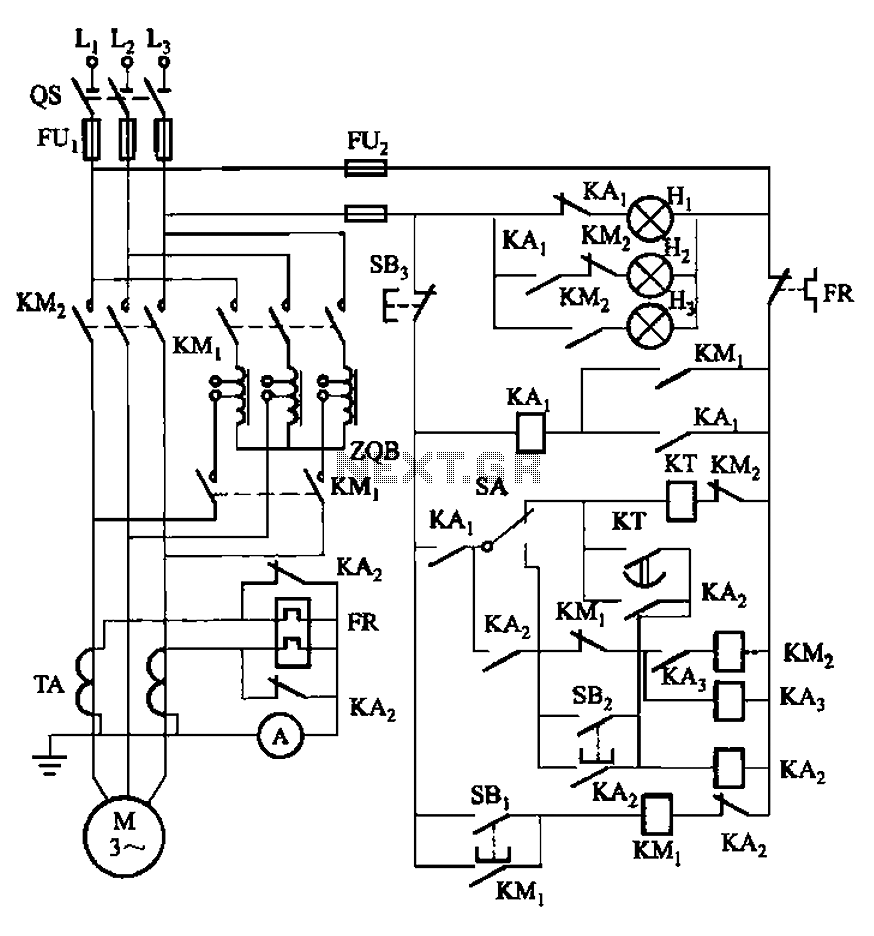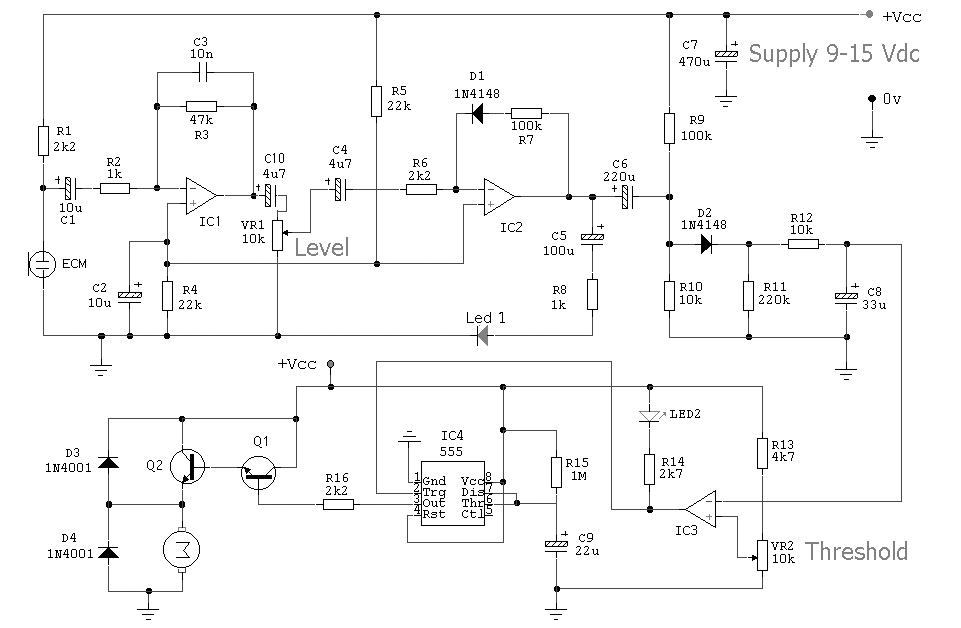
Circuit Project: 3V Low Battery Voltage Flasher
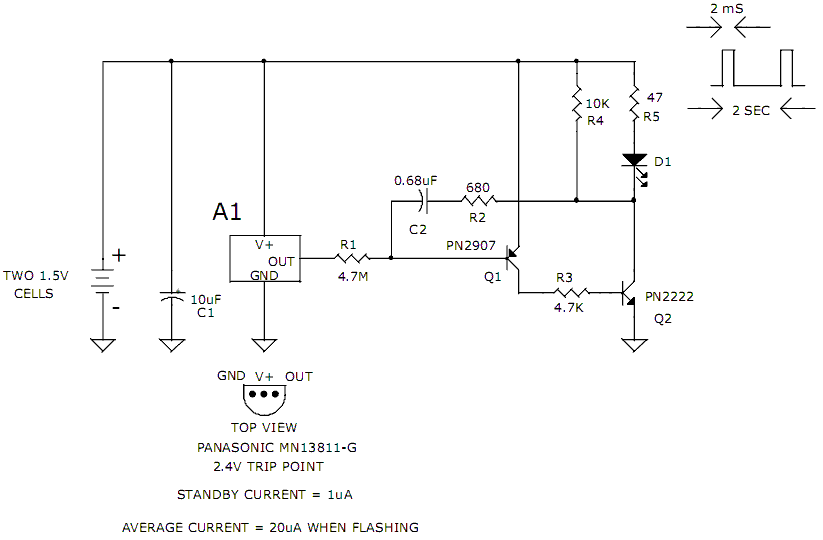
Many battery-powered devices use two AA alkaline cells. Often, it is not apparent when it is time to replace the batteries until the device powered by them ceases to function.
In battery-powered devices that utilize two AA alkaline cells, it is critical to monitor the battery life to ensure consistent operation. These devices typically operate within a voltage range of 2.4V to 3.0V when fully charged, which is sufficient for most low-power applications. The performance of the device may degrade as the battery voltage drops below the operational threshold, leading to unexpected shutdowns or malfunctions.
To address the issue of battery life monitoring, a simple battery level indicator circuit can be integrated into the design. This circuit may consist of a voltage divider connected to an analog-to-digital converter (ADC) that interfaces with a microcontroller. The microcontroller can periodically sample the battery voltage and compare it against predefined thresholds to determine the state of the battery. If the voltage falls below a certain level, the microcontroller can activate an LED indicator or send a notification to the user, prompting them to replace the batteries.
Additionally, implementing a low-power microcontroller can enhance energy efficiency, extending the overall battery life of the device. Incorporating sleep modes and optimizing the circuit design to minimize current consumption during idle states can also contribute to prolonged battery operation.
In summary, while devices powered by two AA alkaline cells are common, integrating a battery monitoring solution can significantly improve user experience by providing timely notifications for battery replacement, thereby preventing unexpected device failures.Many battery powered devices use two AA alkaline cells. Often you will not know when it is time to replace the batteries until the device powered by them.. 🔗 External reference
In battery-powered devices that utilize two AA alkaline cells, it is critical to monitor the battery life to ensure consistent operation. These devices typically operate within a voltage range of 2.4V to 3.0V when fully charged, which is sufficient for most low-power applications. The performance of the device may degrade as the battery voltage drops below the operational threshold, leading to unexpected shutdowns or malfunctions.
To address the issue of battery life monitoring, a simple battery level indicator circuit can be integrated into the design. This circuit may consist of a voltage divider connected to an analog-to-digital converter (ADC) that interfaces with a microcontroller. The microcontroller can periodically sample the battery voltage and compare it against predefined thresholds to determine the state of the battery. If the voltage falls below a certain level, the microcontroller can activate an LED indicator or send a notification to the user, prompting them to replace the batteries.
Additionally, implementing a low-power microcontroller can enhance energy efficiency, extending the overall battery life of the device. Incorporating sleep modes and optimizing the circuit design to minimize current consumption during idle states can also contribute to prolonged battery operation.
In summary, while devices powered by two AA alkaline cells are common, integrating a battery monitoring solution can significantly improve user experience by providing timely notifications for battery replacement, thereby preventing unexpected device failures.Many battery powered devices use two AA alkaline cells. Often you will not know when it is time to replace the batteries until the device powered by them.. 🔗 External reference
Warning: include(partials/cookie-banner.php): Failed to open stream: Permission denied in /var/www/html/nextgr/view-circuit.php on line 713
Warning: include(): Failed opening 'partials/cookie-banner.php' for inclusion (include_path='.:/usr/share/php') in /var/www/html/nextgr/view-circuit.php on line 713
